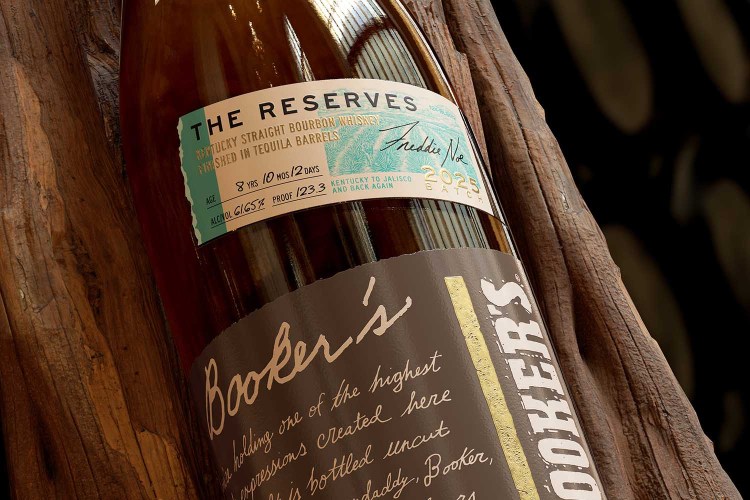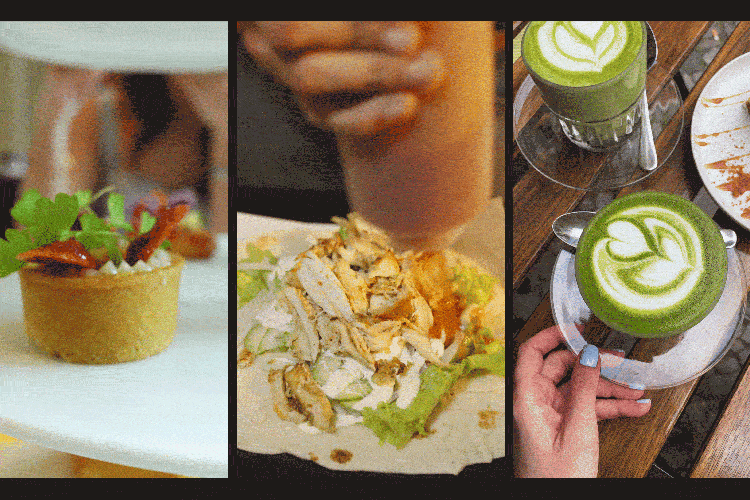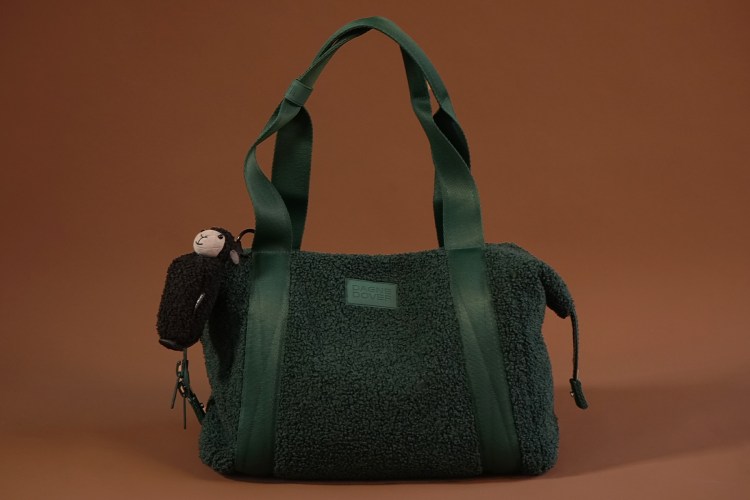Twenty years ago, Yoshiyuki Tamura was living in Tokyo, working at Uniqlo, and had no aspirations of taking over his family’s tea farm back in Suruga. That’s despite being the first-born son and thus the first in line to do so. Tea farming, he thought at the time, was just so boring. Too boring to make up a life.
Tamura’s story isn’t an anomaly. Not in the world, not in Japan, not even in Suruga. Interest from younger generations in ancient trades like tea farming has been tapering off for years now. I heard a similar story while in India last October: Crafts that the country is renowned for, like carpet making and tapestry weaving, which have been passed down through generations, are now at risk of dying out due to a lack of buy-in from young family members. Instead, kids are moving to bigger cities, getting college degrees and ultimately forging their own paths. That’s exactly what Tamura intended to do.
Yet, once he was away from home, something unexpected happened. He began finding joy in sharing his family’s tea blends with friends in Tokyo. The reactions it solicited and the conversations it led to were validating in all the same ways he’d found his career in the city. He began pondering the possibilities. Tamura eventually returned to Suruga, and to Tamura Tea Farm, but on his own terms.


The Tea Farmer
Suruga is a province that today makes up the central part of Shizuoka Prefecture in Japan. It’s mountainous, bucolic and — thanks to the presence of Suruga Bay to the south which connects to Mount Fuji in the north via the Suruga Trough (Japan’s highest and deepest points, respectively) — rife with picture-perfect views at every turn. Due to its climate, landscape and abundant water sources, it’s also a major hub for tea harvesting. At present, it accounts for 40% of Japan’s tea production. Tamura Tea Farm stretches back 13 generations, and it’s one of many.
Tamura returned at a rather opportune time. His homecoming coincided with a government initiative to expand tourism into historically less trafficked areas of Japan, like Suruga, around 2006. This was imperative, because what Tamura wanted above all else was to open his farm up to outside visitors, to connect in-person with a broader audience. Among other things, the government subsidized an open-air terrace on his plantation that would allow him to begin hosting travelers. “If you build it, they will come” was certainly true in this case.

On my first morning in Suruga, I sat on Tamura’s terrace with a cup of nutty and only slightly astringent okumidori matcha in hand — his favorite to produce — enjoying unobstructed views of the city below. Tea plants cascaded down the mountain all around us. He’d carefully prepared snacks meant to enhance the flavor of the tea, including chocolate fondue and dates with butter. I tried three teas in total while he tutored me on the ideal steeping temperature and times for each. He was born to entertain, and his property, which has existed this way for more than a century, lends itself to it perfectly.
While Tamura’s farm is unique in its particulars, his return home is indicative of a larger trend. Other members of his generation, those who had also scoffed at the idea of taking over the family business, have had comparable reckonings and returned to their roots — if not always in the form of farming.

The Next Generation
Yasuhisa Iwazaki has, by all measures, been extremely successful in the tea industry. He is the president of Maruhide Iwazaki, a tea wholesaler based in Shizuoka, and a master tea blender. These days, he’s so passionate about his work that you’d never know it was thrust upon him following his father’s sudden death, at which point he was studying for his CPA certification. “This is your show now,” his mother told him at the funeral.
At her urging, Iwazaki took up the reins of the business and learned the ins and outs of the trade. He didn’t know a single thing about tea, but when faced with the choice to sink or swim, he swam. Like Tamura, it was important to Iwazaki to introduce parts of himself into the business; he also desired to connect with a wider audience. Today, he offers gogumi (tea-blending) experiences as well as modern Japanese tea pairings as vessels for that connection.

I sat at the counter at Kakuya Bessho — an upscale restaurant inspired by legendary Japanese chef Kakuya Iwashita who served Tokugawa Ieyasu, the founder of the last shogunate in Japan, and just one of the locations where Iwazaki often leads pairings — and enjoyed eight Suruga-inspired courses, all with their own carefully crafted tea-based concoctions to drink alongside. His passion for tea is contagious. In just the few hours I spent with him, hurling question after question, I gained such a fuller appreciation for the role tea plays here and the ceremony surrounding it.
This is what he spends the overwhelming majority of his time doing: coming up with new and inventive ways to inject energy into the tea-drinking community — another rapidly declining population, and another issue the industry is trying to address.

According to Yamamotoyama, another Shizuoka-based tea company, the average person in Japan used to consume nearly 1,000 grams of tea per year. In the past handful of years, however, that number has dropped down to around 650 grams. In 2020, as a consequence of the pandemic, it fell well below 600. Interest in tea production may be waning, but it hardly matters if no one is consuming it.
That said, a tea-drinking resurgence may be on the horizon, if the uptick in demand for ready-to-drink (RTD) teas and, more specifically, RTD green tea is any indication. (RTD tea accounted for 30% of soft drink sales in Japan in 2023.) More and more, people are seeking healthier, more complex and more convenient alternatives to booze; conveniently, tea qualifies. And while Gen Zers may not be participating in many traditional tea ceremonies (yet), they are hanging out at new and trendy cafes that serve it.
Others in the local industry have tried more creative tactics in hopes of engaging the next wave of tea producers and drinkers.

Shoran Ohba’s grandfather was a master calligrapher who operated his own calligraphy school in Japan. While elementary-aged school children are still required to take calligraphy classes, fewer of them are choosing to continue on with their lessons outside of the requirements as previous generations once did. Calligraphy, it would seem, is going the way of tea culture. But Ohba is determined to preserve the tradition by offering workshops, often in conjunction with Iwazaki’s tea pairings. These aren’t the traditional classes kids are mandated to take in school. Instead, Ohba has patented a technique that involves using matcha for ink. All of her art is made entirely from paper and locally-produced green tea.
Get Acquainted With the Wonderful World of Japanese Convenience Stores
Every food item you need to try from a konbiniIn a similar vein, Kyoichiro Washizu is a fifth-generation wazome dyer, a method that comprises several traditional Japanese dyeing techniques. Fueled by the desire to create something exclusive to Shizuoka, he introduced ochazome, or tea-dyeing. The dye he uses is made of green-tea plant waste from local farms — the parts of the plant that are typically disposed of after processing. The result is a distinctive, almost black indigo fabric that’s then stencil-dyed to create Washizu’s signature geometric patterns.
Washizu offers tea-dyeing workshops out of his studio in Takumishuku, a co-op for local artisans. His work can be seen all over the property in the form of wall hangings in the on-site rental properties, banners outside the newly opened public bath and scarves in the shop. The waste from his dyeing operation is combined with the waste from the brewery next door to create fertilizer used to grow produce on the property.


And then there’s Shigeki Maruyama. As evidenced by the defunct stone kiln that sits directly next to his driveway, his family has been in the business of Shitoro-ware, a form of pottery known for being solid and moisture-tolerant, for a long time — he is, by his estimate, the fifth generation. Pottery has been a prevalent trade in the area since Tokugawa Ieyasu retired in Suruga, bringing with him a myriad of craftspeople from Tokyo, seven potters among them, amounting to seven famous kilns. This proved an extremely lucrative move for those potters for two reasons. First, tea culture and pottery go hand in hand. For the Japanese, the utensils used during a tea ceremony — bowls, cups and such — are not just functional; they are carefully chosen art objects, inextricably linked to the tea-drinking experience. The second is that the mountains in Suruga are teeming with good clay.
Fittingly, Maruyama sources his clay directly from the local tea farms, which makes for a full-circle moment while you’re on said farm, drinking their signature blend. It’s rare to find a place where everything is produced locally, from start to finish, tea leaf to teacup. He tells me all this as I sit in the small studio attached to his house, while hand-building a cup of my own. He, too, has hopped on the tourism bandwagon in recent years.

A Look to the Future
On my last morning in Japan, I sat on another government-subsidized terrace overlooking the 400-year-old Murakami Tea Garden, watching the sun rise over Mount Fuji and sipping the black tea the family built its name on. It was a clear morning, but on some days the clouds roll in over the mountains that separate the farm from the high peak, often blanketing them completely. Back in Tokyo, someone had pointed out Mount Fuji from the 39th floor of the hotel I was staying at. It paled in comparison to this. I’d been in the country for weeks by that point, having made stops in Osaka and Kyoto too, and it felt like I was only just now getting below the surface of all this country has to offer.
Mixing industry with tourism isn’t a new concept. You can tour the factories of virtually every household brand in the world. What makes Suruga a standout is the level of access you’re given. These people aren’t just sharing their businesses or their farms. They’re sharing their homes, their studios, their culture at large.
After the morning on the terrace, we were invited back to Hiroki Murakami’s century-old house for a breakfast prepared by his mother. Suffice it to say, it far surpassed the hotel buffets we’d been frequenting up to that point.

Unlike so many of his peers, though, Murakami, a fourth-generation heir to his family’s farm, did actually know that after college he would take over.
Replete with riceballs from breakfast, I asked him if he’d ever had any reservations about becoming a tea farmer, to which he responded, “I’m happy with my life.”
Murakami doesn’t frequently interact with many members of the younger generations in the area, so he isn’t clear on their positions on taking over. But while producing quality tea is his primary focus, as opposed to raking in money, he’s certain that making the tea industry profitable again would go a long way in capturing their attention.
It might’ve been the first time over the course of my travels in Suruga that I’d heard anyone mention money. It’s the end goal of course, but tea is bigger than that here. By reframing their approach, the current generation is changing the narrative to meet their own interests. Turns out trendsetting and time-honored are not mutually exclusive.
This article appeared in an InsideHook newsletter. Sign up for free to get more on travel, wellness, style, drinking, and culture.



























